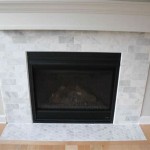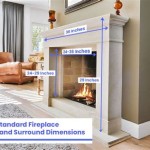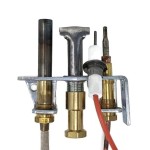Small Corner Freestanding Fireplace: A Space-Saving Heating Solution
The small corner freestanding fireplace represents a practical and aesthetically pleasing heating solution for homes with limited space. Unlike traditional fireplaces which often require significant structural modifications and a dedicated chimney, these units offer flexibility and ease of installation, making them a popular choice for apartments, smaller houses, and rooms where a conventional fireplace isn't feasible. Understanding the features, benefits, and considerations involved in selecting and installing a small corner freestanding fireplace is crucial for homeowners seeking efficient and attractive supplemental heating.
A small corner freestanding fireplace is typically designed to fit snugly into a corner of a room, maximizing space utilization. These units come in a variety of designs, utilizing different fuel sources such as wood, gas, or electricity. The choice of fuel source has a significant impact on the fireplace's performance, maintenance requirements, and overall cost of operation.
Fuel Options and their Implications
The selection of a fuel source for a small corner freestanding fireplace is a primary consideration. Each fuel option presents its own set of advantages and disadvantages that must be carefully weighed against individual needs and preferences.
Wood-Burning Fireplaces: These fireplaces offer the classic ambiance and authentic crackling sound that many homeowners find appealing. However, they require a consistent supply of seasoned wood, diligent maintenance to remove ash and soot, and adherence to local regulations regarding wood burning. Furthermore, they generate smoke and require proper venting to ensure safe operation and minimize environmental impact. Wood-burning fireplaces may also be subject to restrictions in areas with air quality concerns.
Gas Fireplaces: Gas fireplaces offer convenience and ease of use compared to wood-burning models. They can be turned on and off with the flip of a switch or the press of a button on a remote control. Gas fireplaces are available in both natural gas and propane models, requiring a connection to a gas line or a propane tank. They produce less particulate matter than wood-burning fireplaces and typically require less maintenance. However, gas fireplaces may not provide the same level of heat output as wood-burning models, and they require professional installation to ensure proper venting and gas line connections.
Electric Fireplaces: Electric fireplaces are the simplest to install and operate. They require only a standard electrical outlet and do not produce any emissions or require venting. Electric fireplaces use heating elements to generate heat and often feature realistic flame effects to mimic the appearance of a real fire. They are a safe and convenient option for homeowners who prioritize ease of use and do not want the hassle associated with wood or gas. While electric fireplaces are relatively energy efficient, their heating capacity may be limited compared to wood or gas options, making them best suited for supplemental heating in smaller rooms.
Design Aesthetics and Material Choices
Beyond functionality, the aesthetic appeal of a small corner freestanding fireplace contributes significantly to the overall ambiance of a room. Manufacturers offer a wide array of designs, materials, and finishes to complement various interior styles.
Traditional Styles: Traditional fireplaces often feature ornate detailing, such as decorative moldings, carved mantels, and brick or stone facades. These designs evoke a sense of warmth and elegance, making them suitable for classic and formal living spaces. Common materials used in traditional fireplaces include cast iron, wood, and stone veneer.
Modern Styles: Modern fireplaces typically prioritize clean lines, minimalist designs, and contemporary materials. These units often feature sleek metal finishes, glass panels, and geometric shapes, creating a sophisticated and understated look. Modern fireplaces are well-suited for contemporary and minimalist interiors.
Material Choices: Material choices play a crucial role in the durability, aesthetics, and cost of a small corner freestanding fireplace. Cast iron offers excellent heat retention and a classic look, while steel is a lightweight and durable option with a modern aesthetic. Stone and brick veneers provide a realistic masonry appearance without the weight and expense of solid stone or brick. The selection of materials should consider both the aesthetic preferences of the homeowner and the functional requirements of the fireplace.
Installation Considerations and Safety Precautions
Proper installation is crucial for the safe and efficient operation of a small corner freestanding fireplace. Adherence to manufacturer's instructions and local building codes is essential to prevent fire hazards and ensure optimal performance.
Clearance Requirements: Fireplaces generate significant heat, so maintaining adequate clearance around the unit is vital. Manufacturers specify minimum clearance distances from combustible materials, such as walls, furniture, and curtains. These clearances must be strictly observed to prevent overheating and fire risks.
Venting Requirements: Wood and gas fireplaces require proper venting to safely exhaust combustion gases outside the home. Venting systems must be installed according to manufacturer's specifications and local building codes. Incorrect venting can lead to carbon monoxide poisoning and other health hazards. Electric fireplaces do not require venting as they do not produce any emissions.
Professional Installation: While some homeowners may be tempted to install a small corner freestanding fireplace themselves, professional installation is strongly recommended, particularly for gas fireplaces. Certified installers have the expertise and experience to ensure that the fireplace is installed safely and correctly, minimizing the risk of problems down the line. Professional installation also provides peace of mind and ensures compliance with local building codes.
Safety Features: Many modern fireplaces incorporate safety features such as overheat protection, automatic shut-off mechanisms, and child safety locks. These features enhance the safety of the fireplace and prevent accidents. Homeowners should familiarize themselves with the safety features of their fireplace and ensure that they are functioning properly.
Choosing a small corner freestanding fireplace requires careful consideration of fuel options, design aesthetics, installation requirements, and safety precautions. By thoroughly evaluating these factors, homeowners can select a fireplace that provides efficient heating, enhances the ambiance of their home, and operates safely for years to come.

Maximizing Space With A Stylish Freestanding Corner Fireplace

Corner Ventless Gas Fireplace Visualhunt

16 Trendy Corner Fireplace Ideas For A Cozy Living Room

Ortal Standalone Modern Corner Gas Fireplace Small Freestanding

Small Corner Modular Hearth 1370mm My Fireplace

Corner Wood Burning Stoves The Ultimate Guide Hot Box York

Corner Ventless Gas Fireplace Visualhunt

Corner Log Burner Installation Four Marks Alton Hampshire

ᑕ❶ᑐ Corner Fireplace Save Space In Your Room Magikflame Blog

Corner Wood Stove Fireplace With Juniper Mantel Burning Stoves Living Room Surround
Related Posts








